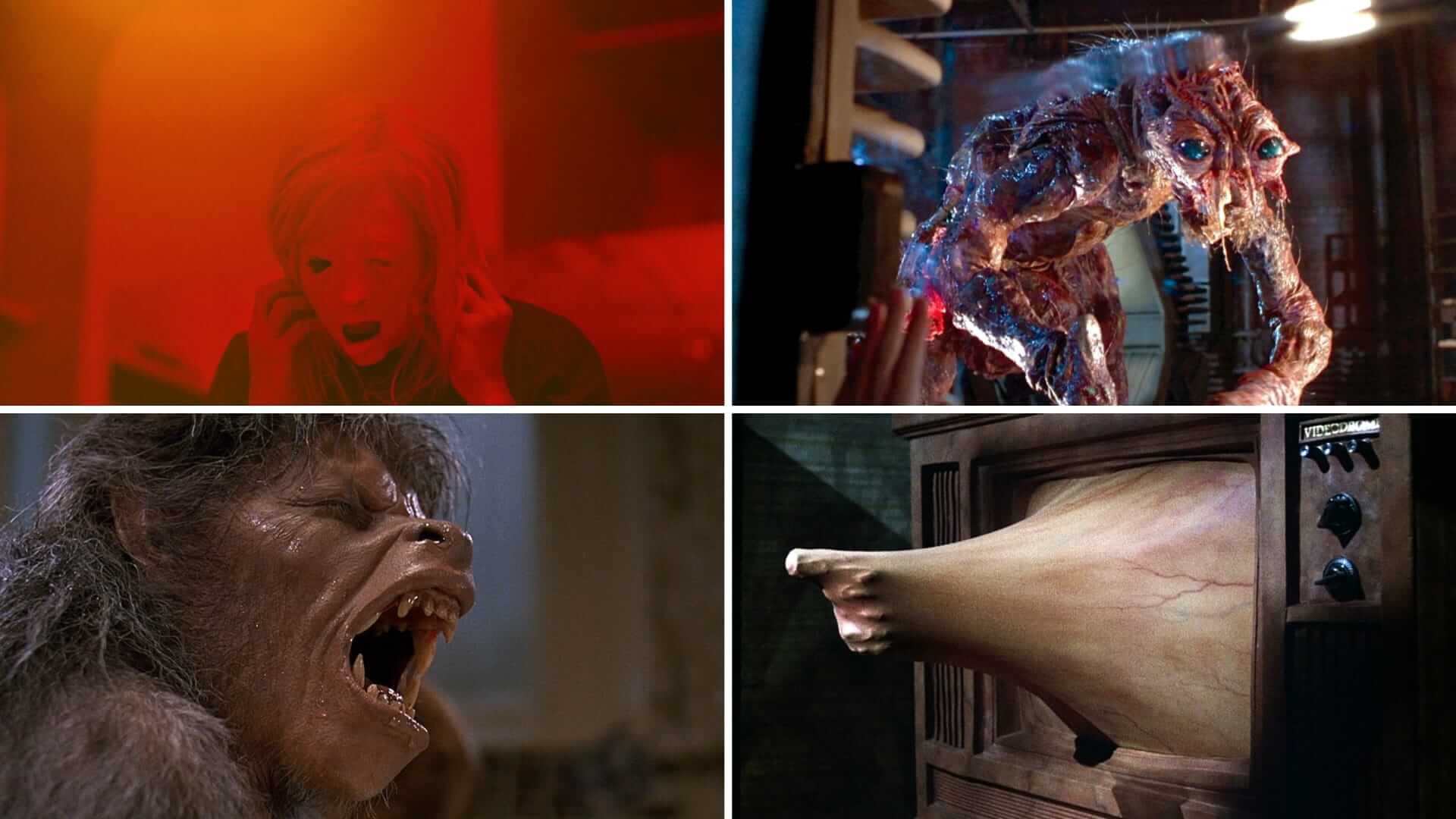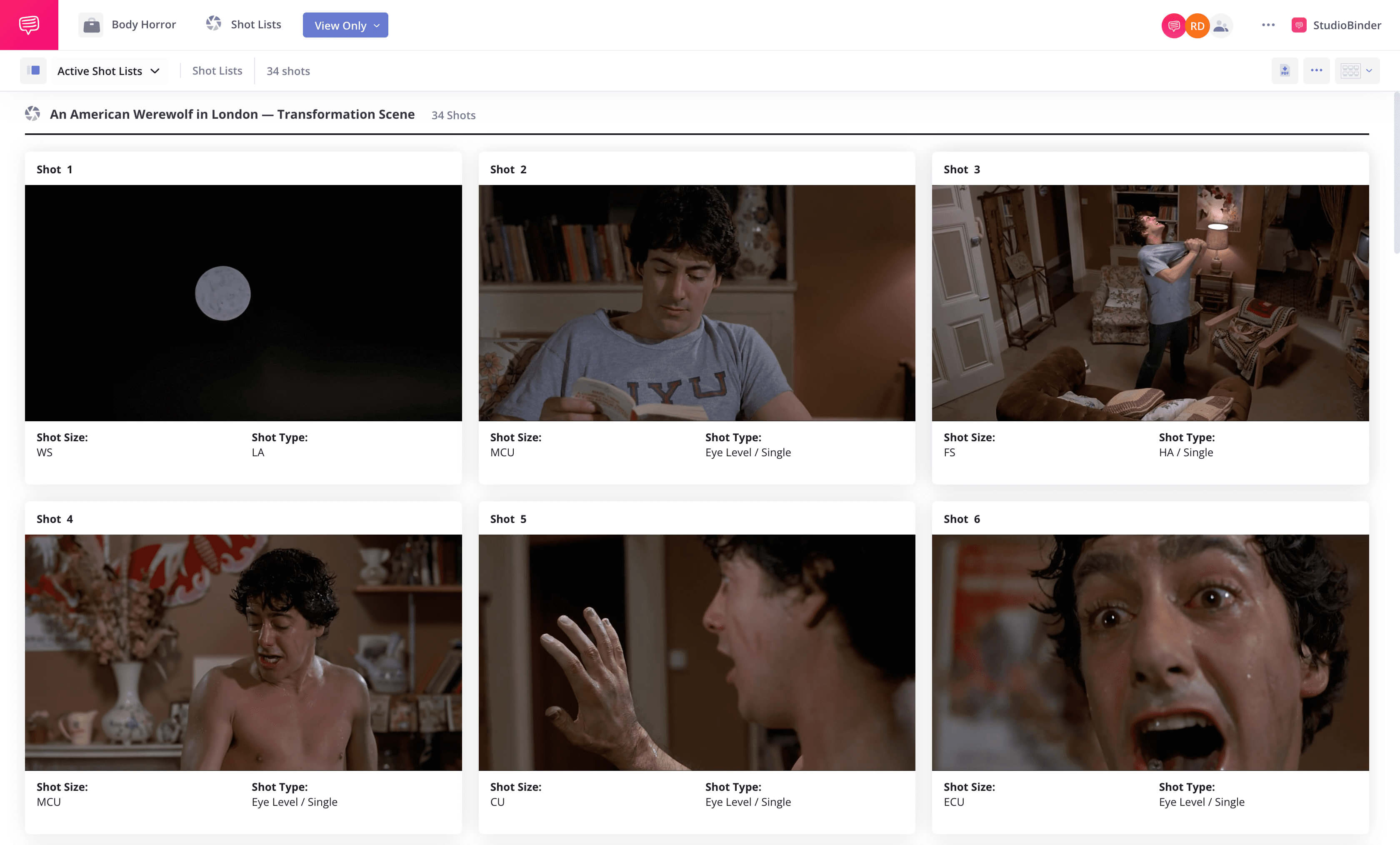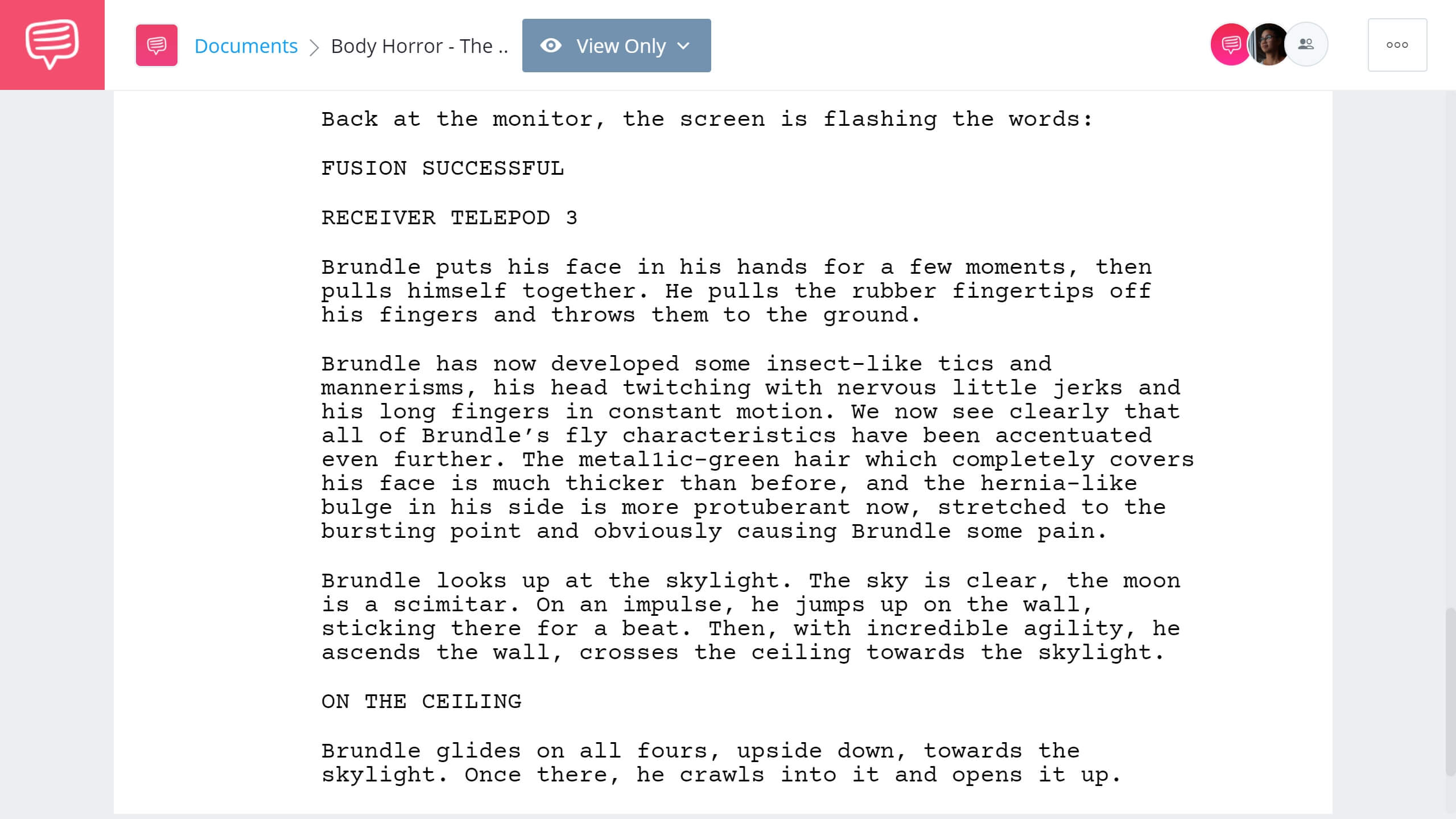What is body horror? Even hardcore horror fans might have trouble translating body horror movies into words. It’s a little bit of a “you know it when you see it” kind of thing. In this post, we’ll be providing a body horror definition, digging into the history of the genre, and examining its place in contemporary cinema. We’ll also cover plenty of gory examples of the best body horror movies along the way.
Best body horror movies
First, let’s define body horror
If you are inexperienced in the overall horror genre, then body horror films might not be the best to start with. It is by all accounts one of the more extreme sub-genres, both in concept and in presentation.
But if you've got a strong constitution and are looking for movies that bring a philosophical subtext to the table, you're in the right place.
BODY HORROR DEFINITION
What is body horror?
Body horror is a specific type of bodily imagery in horror films and can also be considered a subgenre unto itself. The term is versatile and a little bit flexible. One film might contain elements of this sub-genre, while another might be considered a body horror film full stop. The goal of this sub-genre is usually to gross out and disturb viewers.
This type of horror revolves around distortions of the human body. The key difference between this sub-genre and other types of gory horror is that it isn’t about the human body being destroyed. Rather, it's about being transformed into something grotesque. Things like diseases, viruses, infections, and parasites are common in these movies.
Additionally, these films often take on surreal, sci-fi, or supernatural qualities, mutating the human form into something that would be impossible in real life. The body horror genre typically features a focus on special effects, and often includes social commentary as well.
Body Horror Movies Defined:
- A sub-genre of horror
- Transforms the human body
- Reliant on special effects make-up
A Bit of History
Exploring body horror
In literature, examples of body horror can be found reaching back hundreds of years. Descriptions of grotesque bodily transformations exist all across horror literature, but there was not yet a defined genre.
If you’re looking for some horror literature to check out, the video below offers several recommendations.
Horror book recommendations
Body horror has been present in cinema for many years, though not always in the same form. It might not seem like it when compared to modern examples. But the stitched together body parts of the Frankenstein monster and the rotting flesh of The Mummy are both technically examples from the age of the Universal monster movies of the early 1930s.
Body horror still had a long way to go and the genre was not yet fully formed. Here's a look back at the first wave of horror cinema, the origins of bodily horror, and why they still hold appeal today.
A retrospective on classic horror monsters
Two things were required for the development of body horror to become what it is today. First, a loosening of film censorship.
Pre-code movies had a little leeway, but were still more tame than modern equivalents and were missing the second requirement: the advancement of special effects make-up.
In the days of ironclad censorship under the Hays code, grotesque, disturbing imagery was not allowed in the slightest.
The first part in a series on the history of special effects
Related Posts
Body horror is largely dependent on special effects, and it is one type of horror that often allows SPFX artists to get creative and show all that they can do. The Academy Award for Best Makeup and Hairstyling was added to Oscars largely as a way to celebrate the work of pioneering SPFX artists like Rick Baker.
Baker took home the first ever award in the category for his work on An American Werewolf in London. See where the film ranks on our rundown of the best werewolf films ever made.
The central werewolf transformation scene is a quintessential piece of body horror. Just remember that this sequence was achieved entirely with practical effects in the early '80s. Even with those caveats, it still holds up. If you haven't seen it, check it out below.
An American Werewolf in London transformation scene
Let’s dig a little deeper into this iconic scene. To see how this complicated transformation sequence was carried out, we broke the scene down into a storyboard using StudioBinder's shot listing software.
The shot framing and camera angles of every shot was purposely chosen to best sell the effects. Each shot in this scene can essentially be considered its own SPFX gag, which all culminate in one overall effect once assembled.
Click the image below to explore the entire sequence, shot for shot. You can even download a PDF for inspiration next time you plan a similar sequence.
The late '70s into the '80s was considered by many to be the golden-age of body horror and where the dedicated subgenre was officially born. The work of director David Cronenberg was vital to the formation of the genre and its rise in popularity.
Cronenberg films, namely Rabid, The Brood, Scanners, The Fly, Videodrome, and Dead Ringers, remain massively influential. David Cronenberg made it onto our list of the best directors of all time, find out who else made the cut.
See how David Cronenberg and Charles Edward Pogue wrote the bodily transformations in the screenplay for The Fly. Notice how descriptive the writing is and the attention to the gory details that eventual film would present.
Cronenberg Body Horror • Read the entire scene
Body horror has changed over the years. The subgenre saw its greatest hits during the height of practical effects. Marveling at the creative and technical innovations and accomplishments of SPFX artists was a big part of the allure of body horror. In the age of VFX and CGI, digital body horror doesn’t hold quite the same weight for fans of the sub-genre.
The 2011 take on The Thing makes for an interesting case study on the shift from practical effects to digital. The film was shot using old school SPFX but then replaced them in post-production.
How and why the practical effects were replaced in The Thing (2011)
Still, body horror has a place in contemporary cinema. It even pops up frequently in mainstream entertainment in the modern age through the likes of zombie films and TV shows. Check out our rundowns of the best zombie films and the best new/upcoming zombie films for recommendations.
Related Posts
Best body horror movies
Body horror movie examples
If there’s one name directly linked to the body horror genre more than any others, it’s David Cronenberg. These movies are sometimes even called “Cronenbergian” in the same way that cosmic horror movies are often called “Lovecraftian” when inspired by the work of author H.P. Lovecraft.
The name Cronenberg is synonymous with body horror. Even more so now as David's son, Brandon Cronenberg, has taken up the mantle and begun making films of his own. The Cronenbergs are far from the only filmmakers dabbling in body horror, but a film like The Fly or Videodrome makes for the perfect place to get started with the sub-genre.
How to make Cronenberg body horror • The Fly
Surreal interpretations of body horror pop up from time to time in the work of David Lynch. While a film like Inland Empire has flashes of body horror, Lynch’s most concentrated dose can be found in his first film: Eraserhead.
The grotesque appearance of the newborn baby became one of the defining images of body horror when it arrived in 1977. In addition his horror leanings, David Lynch is an important voice in the world of experimental filmmaking.
Meet The Eraserhead Baby
Another noteworthy director in the genre, though one who never quite reached the same level of acclaim, is Stuart Gordon alongside his producer-turned-director Brian Yuzna.
Re-Animator, From Beyond, and Society are all significant entries in the canon of body horror films. The shunting sequence from the Yuzna-directed Society is one of the most literal interpretations of grotesque bodily horror ever put to screen. Spoiler warning for the video below, this is the film’s big, gory climax.
The shunting in Society
John Carpenter’s The Thing is a significant work of horror crossing over with the science-fiction genre. Find out where the film landed on our ranking of John Carpenter’s entire filmography.
SPFX artist Rob Bottin and his team delivered some of the most disturbing body horror images ever put to screen in The Thing. The chest-cavity scene is a sight to behold and remains just as impressive all these years later.
Be careful who you use the shock paddles on
The body horror genre has never really gone away since it rose to popularity, though it does ebb and flow in prominence over time. Following films like Hellraiser in the late '80s, the craze around the sub-genre died down a bit without disappearing altogether.
The flood of grotesque body horror slowed to more of a trickle outside of typical infection and zombie fare throughout the '90s and early 2000s. However, there were some notable outliers such as The Human Centipede, and Cabin Fever.
Cronenberg continued to contribute with eXistenZ. Sequels to earlier films like Basket Case, Tetsuo: the Iron Man, and the aforementioned Scanners and Hellraiser were all added to the canon.
Check out this video dedicated to a more recent masterpiece: Slither.
Body horror monsters in Slither
Body horror has been making a little bit of a resurgence recently with films like Julia Ducournau’s Raw and the Netflix original The Perfection. As a new wave of horror filmmakers, including the likes of Ari Aster, show a penchant for body-horror elements, this beautifully grotesque subgenre isn’t going anywhere. To see how the body-horror elements were handled in the screenplay, check out our script breakdown for Midsommar.
Related Posts
UP NEXT
The Most Underrated Horror Movies
You should now have a pretty good handle on what body horror is and have a boatload of recommendations to check out from the subgenre. If you are still looking for more creepy recommendations, our list of the most underrated horror movies is sure to have something interesting for you.
Up Next: Underrated Horror Movies →
Share your vision with elegant shot lists and storyboards.
Create robust and customizable shot lists. Upload images to make storyboards and slideshows.


